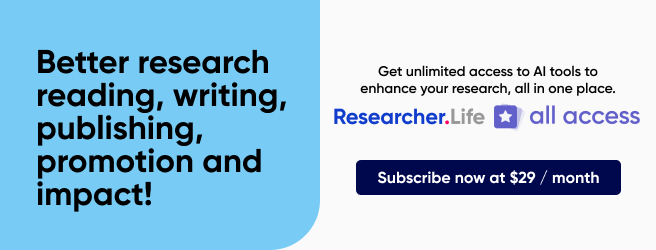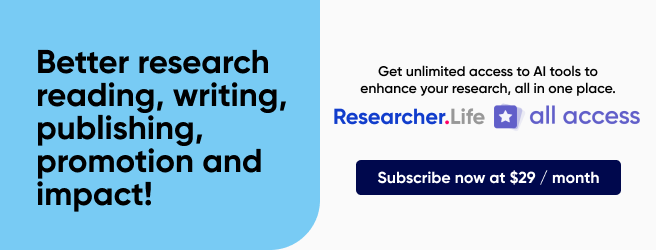Unethical withdrawal of a manuscript for submission to a higher impact factor journal: A case study
Duplicate submission
Duplicate submission is a common form of academic misconduct. Each published article in a journal is expected to be completely original. Submitting the same or a very similar manuscript to two or more journals is unethical and can lead to rejection or even retraction. Why is duplicate submission considered unethical? What should authors be aware of to avoid allegations of duplicate submission? This series of posts covers the basics that every author needs to know about duplicate submission.

Case: The author got his paper edited by Editage and sought our help in selecting a suitable journal. We shortlisted two journals for him. The author sent out pre-submission inquiries to both the journals. One journal (Journal A) got back within a few days, showing interest in his work. The second journal (Journal B), which had a higher impact factor, did not respond. After waiting for a week or two, the author submitted his paper to Journal A.
About two months later, the author received a response from Journal B saying that they were interested in his study. The author communicated this to us and was very excited about it. He wanted to withdraw his paper from Journal A and submit it to Journal B since this was a higher impact factor journal. By this time, the manuscript status on the tracking system of Journal A had been showing “Under Review” for more than a month. We informed the author that it would be against publication best practices to withdraw the paper at this stage. However, in spite of our warnings, he sent a withdrawal letter to Journal A without our knowledge and submitted his manuscript to Journal B.
Meanwhile, the editor of Journal A wrote to the author saying that the request for withdrawal would not be accepted as the peer review was almost complete and the effort of the reviewers would be wasted. The editor mentioned that the editorial decision would be conveyed to the author as the withdrawal was not accepted. Soon after, the author was informed that his paper had been rejected. He was relieved as he felt there would be no complications if his paper was accepted by Journal B.
However, sometime later, the editor of Journal B wrote to the author that his paper was rejected as it was a case of duplicate or concurrent submission. The author replied to this mentioning that he had sent a withdrawal request to Journal A before submitting to Journal B. However, since he could not produce any confirmation of withdrawal from Journal A, his statement was not accepted.
The author approached us again at this point, explained the entire situation, and sought our help in revising and resubmitting the paper to Journal A once again.
Action: We explained to the author that his action had been unethical in two ways:
1. Withdrawal of his paper from Journal A at such an advanced stage in the editorial process, when peer reviews were near completion was unacceptable.
2. Submitting the manuscript to Journal B before getting a confirmation of withdrawal from Journal A was unethical and a case of duplicate or concurrent submission.
We expressed our apprehensions about approaching the same journal again and advised the author to submit to a third journal. However, the author insisted on submitting once again to Journal A as he believed that would be time-saving. We then helped him draft a letter of apology to Journal A with an inquiry asking if he could revise his paper and submit it once again as a new submission.
However, the editor of Journal A replied that the author was banned from submitting any manuscript to this journal for the next three years. We told the author that it was natural for the editor to take some punitive measure against him as he had wasted the time of the reviewers.
Summary: Once a manuscript has been sent out for peer review, it is an unacceptable practice for authors to withdraw it unless there are compelling reasons. Peer reviewers are busy people who do this honorary service only to further the cause of science. Wasting their time is unethical and a misuse of the editorial decision making process.
Authors are sometimes so keen on publishing in high impact factor journals that they indulge in unacceptable practices. Authors should keep in mind a few noteworthy points about withdrawal procedures to avoid falling into trouble:
1. Ideally, a manuscript should be withdrawn only if the authors detect errors or flaws in the manuscript.
2. In case there is a strong reason for withdrawal, a request for withdrawal signed by all the authors and mentioning the reason for withdrawal must be sent to the editorial office.
3. A confirmation of withdrawal from the journal editorial office is required for the withdrawal process to be considered complete.
4. Once the withdrawal is confirmed, the manuscript id will no longer be used by the journal’s submission system.
5. It is unacceptable to withdraw a paper from a journal because it is being accepted by another journal.
6. It is not an acceptable practice to withdraw a manuscript after it has been sent for peer review, unless the reasons for withdrawal are very strong.
7. In cases of unacceptable withdrawals, depending on their withdrawal policy, journals can take punitive measures in the form of a fine or a ban on submitting to the same journal.
8. The withdrawal policies are usually mentioned on the journal website. Authors submitting to a journal should read these policies carefully before sending a request for withdrawal.
Published on: Jan 30, 2015
Comments
You're looking to give wings to your academic career and publication journey. We like that!
Why don't we give you complete access! Create a free account and get unlimited access to all resources & a vibrant researcher community.

Subscribe to Journal Submission & Peer Review














